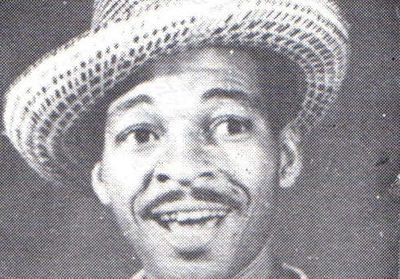
It begins and ends with a blank page.
If you’ve been following these entries for #AWeekinWalcott, you’ll know this is the final one. It’s the point at the wake where the folding chairs have been stacked, the cheesepaste sandwiches consumed, the cauldron of Hong Wing coffee dregs scrubbed out. All that remains is you and your private haunting.
In Walcott’s “Jean Rhys”, which you can read here at Goodreads, there is a biography of a life ordered by hauntings: that of Dominican novelist Jean Rhys, whose Wide Sargasso Sea (1966) was a damning indictment of the exotification of Jane Eyre‘s “madwoman in the attic”. Walcott’s poem contemplates Rhys’ girlhood in needlepoint, as an interloper might peer through the miniature apertures in the latticework, watching processions of aunts parading under a gibbous moon. What you espy is a way of life “beginning to groan sideways from the axe stroke”, its sickly and deceptively strong tendrils clinging to the yellowing hems of tradition and flinty, archly-codexed grace.
Into this world of secrets and slipcovers and subterfuges is the young subject born, a product of sickness and fever-imaginations, of old colonial affectations stewing in the lush Dominican heat. The child-Rhys feels herself outsidered, succumbing to the oppressions of parlour and petit-point, but knows her own future will be significantly more drawn to the flame.
What pieces of you survive in a place that feels predisposed to choke you out? This question isn’t endemic only to Wide Sargasso Sea, in which the lust-flustered Mr. Rochester (the novel never names him, but his identity is clear as a clean-mirror reflection) damns the island and his wife:
“I hated the mountains and the hills, the rivers and the rain. I hated the sunsets of whatever colour, I hated its beauty and its magic and the secret I would never know. I hated its indifference and the cruelty which was part of its loveliness. Above all I hated her. For she belonged to the magic and the loveliness. She had left me thirsty and all my life would be thirst and longing for what I had lost before I found it.”
In the novel, the white husband who has married into what he perceives as savagery is quick to other both Antoinette Cosway and the island that made her. Wide Sargasso Sea gives the last laugh to the island and to Antoinette. It proves that a place can armour itself against colonial attack and indolence; a place can cultivate a savage intuition of itself that chokes out even the mightiest of attempts to topple it.
The crux of understanding human relationships to geography in Wide Sargasso Sea is not only in seeing the place as Rochester sees it. It involves spending time on the island — and then in cardboard-uncomfortable England — as Antoinette. Arguably, expositionally Antoinette can show you more than Rochester ever could: how the young girl-outsider struggles with placehood; how red and black ants; razor grass and snakes; rain that soaks to the skin — all of these are minor savageries better than the ill fortune of knowing other people.
White or not, people who belong to islands can comprehend this native terror. Walcott certainly comprehended it in his lifetime, and he makes room in “Jean Rhys” for Rhys the girl-child to comprehend it: at any point in time you must be ready for an island to devour you whole. What, in the wake of that, is the best you can offer?
In this poem, there is a decaying world, shivering malarial and febrile on the edge of a needle-point. With teeth bared against this colony of disease, curling into itself, there is a bay below “green as calalu, stewing Sargasso”, and a young girl whose hand is married to Jane Eyre, prophesying her own future. It is, in its way, the beginning of a biography, and also the ending of one.
It seems fitting to end #AWeekinWalcott here. “Jean Rhys” is the poem of Walcott’s that has served me, and served me, and served me: solemn, warning, quietly haunting like a ghost slow-moving over the savannah, or sailing across the sargasso sea. It’s a beginning, and an end. It’s how the girl-child grows, and how the house burns down.
May we all begin, grow and burn so well.






